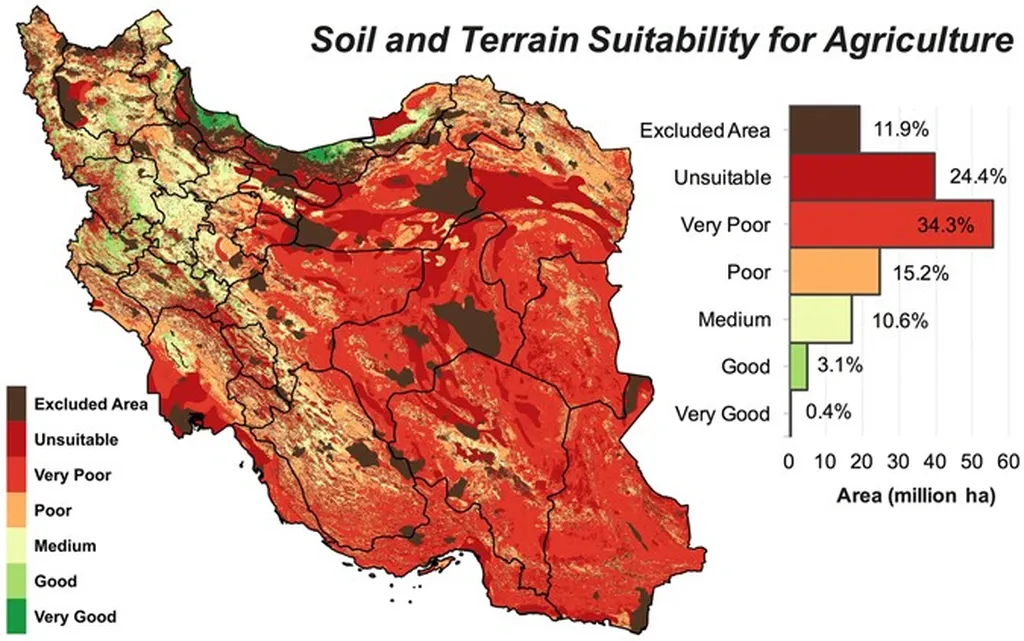In the heart of Iran’s East Lorestan Province, a groundbreaking study is reshaping the way we think about sustainable agriculture. Led by Zahra Marzban from the Unit of Agroecology at the University of Zabol, this research is a beacon of hope for farmers and policymakers alike, offering a roadmap to balance economic viability with environmental sustainability.
The study, published in the prestigious journal *Scientific Reports* (translated to English as “Scientific Reports”), integrates Life Cycle Assessment (LCA), Multi-Objective Programming (MOP), and Geographic Information System (GIS) to optimize rainfed cropping patterns. This innovative approach aims to maximize net profit while minimizing environmental impact, a critical need in a region where agriculture is already under strain.
Marzban and her team found that adopting the MOP cultivation pattern could significantly reduce the global warming potential of the region’s rainfed farmlands by 5,980 kg of CO2. This is not just an environmental win; it’s also an economic boon, increasing net profit by $203,000. “By integrating environmental considerations into agricultural practices, we can achieve sustainable regional development,” Marzban explains. This approach decreases environmental impacts on human health and ecosystem quality by 9% and 11%, respectively, compared to the current scenario.
The study also revealed that different areas within East Lorestan have varying degrees of land suitability. Doroud, for instance, has farmlands ecologically suited for diverse crops, while Aligudarz is moderately suitable for most crops. These findings underscore the importance of tailored agricultural practices that consider local ecological conditions.
For the energy sector, this research offers valuable insights. As the world shifts towards renewable energy, the agricultural sector can play a pivotal role in reducing carbon footprints. By optimizing cropping patterns, farmers can contribute to lower greenhouse gas emissions, aligning with global efforts to combat climate change.
Marzban’s work is a testament to the power of interdisciplinary research. By combining LCA, MOP, and GIS, she has provided a comprehensive toolkit for sustainable agriculture. This approach could be replicated in other regions, offering a scalable solution for global agricultural challenges.
As we look to the future, this research shapes the way we think about agriculture and sustainability. It challenges us to consider the environmental impact of our practices and to seek innovative solutions that benefit both the economy and the planet. In the words of Marzban, “Sustainable agriculture is not just about producing food; it’s about producing food in a way that sustains our environment and our communities.”
This study is a call to action for policymakers, practitioners, and researchers to collaborate and develop policies that promote sustainable agricultural practices. It’s a reminder that the path to a sustainable future lies in integrating environmental considerations into our everyday practices. As we navigate the complexities of climate change and resource depletion, Marzban’s research offers a beacon of hope and a roadmap for the future.

